Rob Nunn's Blog: Interesting Though Elementary, page 13
July 12, 2021
Interesting Interview: Regina Stinson
I know I preface a lot of these interview with talking about how nice the subject is, but it's really true! Sherlockiana is filled with really nice folks. And this week's interviewee is no different. In fact, I've yet to meet a single Sherlockian who's met Regina Stinson and hasn't walked away with a smile on her face. Her canonical jewelry is well known among the conference crowd, and they are truly works of art.
Regina is so low key and cool that you immediately feel at home when you're talking to her. Whether it's a presentation she's giving, article written, or one-on-one conversation with her, you'll be quick to recognize Regina's vast intelligence when it comes to our hobby. She founded and runs her local scion, of which her BSI investiture comes from. But she's been doing that for over 30 years! I know some Sherlockians that haven't even been alive that long! So here is the queen of Sherlockian jewelry herself, Regina Stinson!
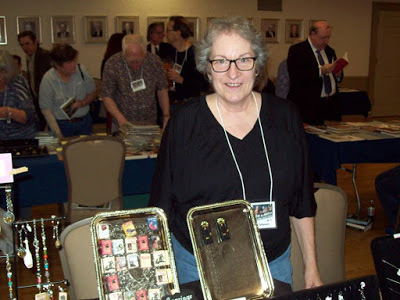
How do you define the word “Sherlockian”?
I think anyone who reads the stories and/or watches the movies and is eager to learn more about Sherlock Holmes is a person I would define as a Sherlockian. Anything related to Sherlock Holmes would also be defined as “Sherlockian.”
How did you become a Sherlockian?
My first introduction to Holmes happened when I was about 12 or 13. I remember seeing the Basil Rathbone movies when they were played on TV. I was really taken with the character and watched every movie they showed. I enjoyed the way Holmes solved mysteries and always seemed to observe what others missed.
Then my older brother gave me paperback book of the short stories, which I still have, to read and after that I was completely hooked. I went to bookstores looking for anything I could find about Sherlock Holmes and I bought as many books as I could afford. Some of my favorites were The Private Life of Sherlock Holmes by Vincent Starrett and Sherlock Holmes of Baker Street by Wm. S. Baring-Gould. The first because it taught me about playing the game, which gave me a whole new perspective on the hobby, and the second because it was fun to learn about Holmes’ alleged history. It could have been true.
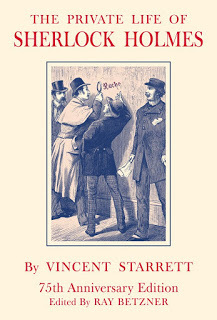
What is your favorite canonical story?
This is a tough one. I like a lot of the stories almost equally. I guess if I had to choose, I’d say The Red-Headed League. I think it has a very clever plot and some funny moments like when Holmes and Watson burst out laughing at Wilson and when he finds a manufactory of artificial kneecaps at the address he was given. Doyle apparently liked it so well, he used a similar plot for two other stories, but not as successfully, in my humble opinion.
Who is a specific Sherlockian that you think others would find interesting?
Roy Pilot is one of my favorite Sherlockians and a good friend. Roy knows all kinds of fascinating things about Doyle and Sherlockiana. He has been involved with Sherlock Holmes for many years and can tell you stories from the past. He’s been a collector of Holmesian and Doylean items for years and has a great collection of really rare items that he enjoys showing to others. Roy is a true gentleman who is always kind and fun to talk to. Everyone who knows him likes him.
What subset of Sherlockiana really interests you?
I like the movies and TV shows, of course, since those were my introduction to Holmes. I have a pretty large collection of Sherlock Holmes movies on VHS and DVD that I enjoy watching from time to time. I also like Sherlockian board games. I have a fairly big collection of those, too.
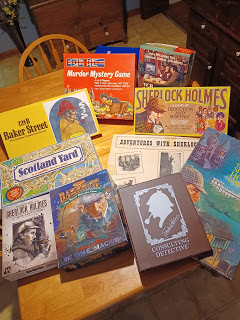
What things do you like to research related to Sherlock Holmes?
I like to research anything that happens to spark my interest. I have researched a number of things such as the Holmes movies, Canonical disguises, and the original illustrations from when the stories were first published, to name a few. I also did a bit of research on the Second Boer War and ichthyosis for an article I wrote for the BSI book: Corporals, Colonels and Commissionaires.
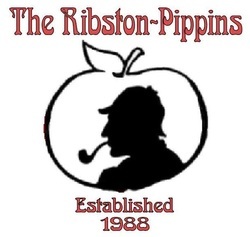
What are the Ribston-Pippins?
The Ribston-Pippins is the scion society I began in 1988. Our name comes from the story Black Peter where Holmes is interviewing seamen. “The first to enter was a little Ribston-Pippin…” A Ribston-Pippin is an antique apple with russeting on it. So our logo, designed by my husband, Sam, is an apple with a silhouette of Holmes inside it. We just celebrated our 32nd year last November, but we had to postpone the celebration until May because of the pandemic. We celebrated with an in-person meeting! We are having another in-person meeting later this month.
What are some of your favorite pieces of Sherlockian jewelry that you've made?
I think the Canonical book necklace and bracelets I made are amongst my favorites. They took a long time to make, but I’m kind of proud of the way they came out.
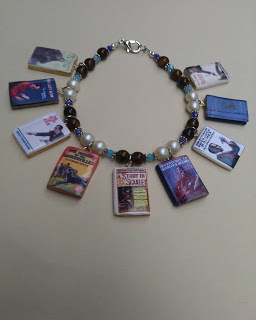
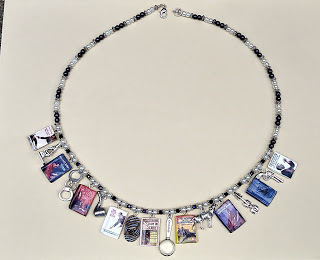
What book would you recommend to other Sherlockians?
Both of the books I mentioned earlier are great. And you can’t go wrong with one of the annotated collections, because the contain so much wonderful information. There are several such as the Baring-Gould and the New Annotated by Leslie Klinger, and the Sherlock Holmes Reference Library, by Gasogene/Wessex Press, which is divided into individual books making it easy to hold in your lap and read.
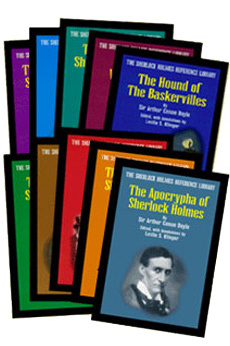
Where do you see Sherlockiana in 5 or 10 years from now?
I’m not very good at making predictions, but I hope Sherlockiana will continue to be as fun and exciting as we find it now. I’m hoping there will be another really good book, movie or TV series that will lead young people to the stories and bring them into our wonderful hobby.
June 27, 2021
Interesting Interview: Steve Mason
A typical Interesting Interview participant a few days to get their answers back to me. Steve Mason holds the new speed record by far. From my initial invitation email to him submitting his answers, he was done with all of this in five hours! And I have no doubt it would've been done more quickly if I had responded to the in-between emails sooner. But I'm not surprised by Steve's quick turnaround on a Sherlockian project because it seems that this man lives and breathes Sherlockiana from his home office.
I first met Steve a few years ago when he and his son Rusty were driving to New York from Texas and decided to make a roundabout trip to visit with Sherlockians they hadn't met in person yet. Since then, I've gotten to know him much better and he never ceases to amaze me with all of the projects he has going on. As I was prepping today's post, I started making a running list of all of the Sherlockian projects I know Steve is involved with: He is the head of The Crew of the Barque Lone Star scion, has made their monthly zoom meetings one of the most popular out there, oversees their annual publishing projects, writes the Baker Street Elementary comic strip along with his son, Rusty, and Joe Fay, is the Beacon Society Communications Chair, created the society's website, oversees the Fortescue Scholarship, publishes the Sherlock's Spotlight Gazette, created the Sherlockian Societies website, puts out the canonical word search puzzles, collects Sherlockian actor autographs, cross-stitches Sherlockian projects, and I know there's more that I can't remember!

How do you define the word “Sherlockian”?
In lieu of a definition, I would instead say how you know a Sherlockian when you see one. A true Sherlockian is the person who, when first introduced to someone for the first time, will somehow slip the name Sherlock Holmes into the conversation within a reasonable, but quick, time frame. Additionally, a true Sherlockian will show their colors by hanging around others who want to talk about Sherlock Holmes, and not come up with any excuse they can to escape another Sherlockian.
How did you become a Sherlockian?
At the age of seven, I found my father’s copy of the 1949 paperback “Hound of the Baskervilles”, and was hooked, even though I didn’t understand much of it. I re-read the entire Canon over and over again throughout junior high and high school. In 1999, I was so lucky to work with another Sherlockian (Dorothy McManus) while in Washington DC, who took me to my first Scion Society meeting, the Red Circle of DC, where I was blessed to meet Peter Blau. As soon as I returned to Dallas, I searched out the Crew of the Barque Lone Star and started attending their meetings.
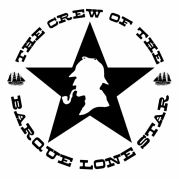
What is your favorite canonical story?
It would have to be “The Adventure of the Three Students” as I have had the privilege of administering the Fortescue Scholarship Exams for the Beacon Society for several years. I will always be thankful to Susan Diamond for allowing me that opportunity.
Who is a specific Sherlockian that you think others would find interesting?
As I assume you are talking about someone who is still with us, I am going to cheat and list two… my two mentors when I first joined the Crew, Don Hobbs and Jim Webb. Both are distinguished Sherlockians, who have given talks internationally. More importantly, both of them believe sincerely in passing it forward. They will always take the time to answer questions and provide guidance to anyone who asks for it. It also helps that both of them have a great sense of humor.
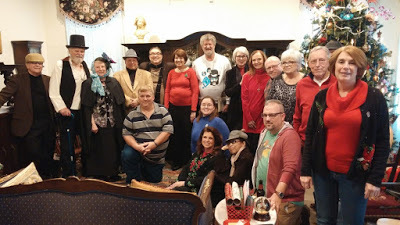
What subset of Sherlockiana really interests you?
While I collected autographs of those who had portrayed Sherlock Holmes for years (usually just signed programs from plays I attended), Howard Ostrom got me hooked into making it a full-fledged activity. While I will never be an expert on all who have played Sherlock as Howard is (and Russell Merritt, and Roger Johnson, and others), I simply enjoy collecting the autographs and reaching out to as many as I can who have had the thrill of playing Sherlock.
What things do you like to research related to Sherlock Holmes?
Since my son, Rusty, Joe Fay, and I continue to produce the “Baker Street Elementary” comic strip on a weekly basis, I find it fun to determine what things can be put into the comic strip that would be time-appropriate… it’s a challenge writing a strip that you can’t include TV, radio, airplanes, basketball, etc. I am very much appreciative to Liese Sherwood-Fabre, with her “The Life and Times of Sherlock Holmes” series, which has helped me in this pursuit.
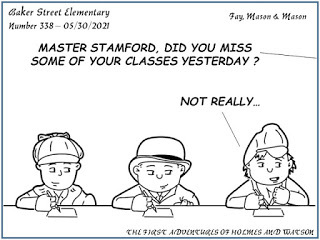
How and why did you become involved with the Beacon Society?
I have always believed that a good Sherlockian is one who wants to pass on our passion to the next generation. Educating students about Sherlock through the Jan Stauber grants, as well as all of the other activities of the Beacon Society, seemed like a wonderful chance to help in this endeavor. I was very honored when Bill Mason asked me to be the Chair of the Communications Committee several years ago. I hope I have enriched the programs. It’s amazing how many wonderful people I have met through the Society.
As a Sherlockian that is behind the scenes in so many projects, what is one that you think more people should know about?
If they have not yet done so, I would highly recommend Sherlockians take the Fortescue Scholarship exams, including the recertification exams. It is a great way for people to review the Canon, and learn more about the Sherlockian world. Everyone who has finished the exams let me know how much they enjoyed taking them.
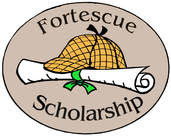
What book would you recommend to other Sherlockians?
I am going to cheat again, by listing 2 books. The first is one of the best books I have ever read on Sherlock Holmes, and that would be Mattias Bostrom’s “From Holmes to Sherlock”. Mattias was simply amazing in the things he found to put in the book that many, if not most, Sherlockians were not aware of.
The other book is one that I think some Sherlockians may have skipped, simply thinking they did not need to read it. That would be Steven Doyle’s “Sherlock Holmes for Dummies”. I think even the most astute Sherlockians will learn a few things from the book, and it makes for a wonderful review of the Sherlockian world in which we all love.
Where do you see Sherlockiana in 5 or 10 years from now?
I think the Sherlockian world will continue to expand as more and more people write pastiches, essays, plays, parodies, and everything else under the sun. But to paraphrase another creator of a wonderful world for all of us, ““I hope we never lose sight of one thing—that it was all started by two people needing to share expenses.” And as the world of Sherlock Holmes continues to expand, I hope everyone will find the time to read, or re-read the Canon, on a regular basis.
June 13, 2021
Interesting Interview: Shana Carter
If you've been on a Sherlockian zoom meeting in the past year and a half, you're going to recognize this week's Interesting Interview. Shana Carter is the woman who looks like she's calling in from a bookstore, but it's actually her own home. Shana isn't someone who hogs the spotlight in these meetings, letting the more vociferous folks dominate the early minutes of every meeting when folks are asking if their microphones are on and wondering if the zoom link worked correctly. But once it gets down to discussion of Sherlockian topics, Shana shines!
Shana is quick to offer up Sherlockian opinions that are always well thought-out and often researched. Any conversation she's a part of is heightened by her presences. She's been a frequent speaker at 221B Con and can hold court on most things cinema-related. And on top of all of that, she is one of the most delightful people you'll ever discuss this hobby with! So let's get to know the fount of Sherlockian knowledge: Shana Carter!
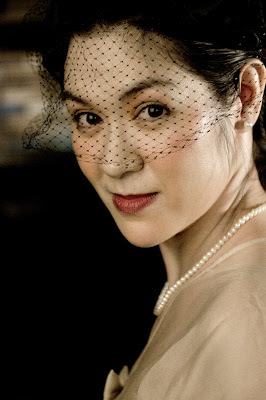
How do you define the word “Sherlockian”?
That's a tricky question. I'd say it comes down to the degree of investment. Ultimately, a Sherlockian is someone willing — perhaps "compelled" is a better word — to engage with Sherlock Holmes at a level beyond simple passive consumption.How did you become a Sherlockian?My path began at the age of nine (I think, I may have been younger), when my parents gave me a copy of The Complete Illustrated Sherlock Holmes, a volume which reproduces the stories illustrated by Sidney Paget as they first appeared in Strand Magazine. Then came the triple combo of Young Sherlock Holmes in 1985 (I was enough of a Sherlockian by then to guess the post-credits twist), The Great Mouse Detective in 1986, and the Granada Television series starring Jeremy Brett on PBS.
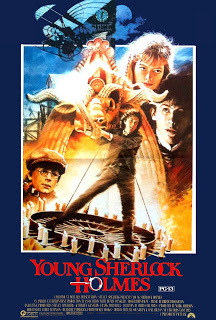
I discovered the rest of the Canon in my junior high school library and read it, then moved on to all the pastiches I could find. In college (Cornell University, B.A., class of 1997) I wrote a paper titled "Art in the Blood" on how the depiction of Sherlock Holmes was influenced by the Aesthetic and Decadent movements. In 2004, I created a Sherlockian "fandom overview" for Crack Van, a fanfiction community on Livejournal. I finally attended my first Sherlockian event in 2012, the Baker Street Babes' inaugural Daintiest Thing Under A Bonnet Charity Ball, which is where I learned that the annual BSI Weekend includes events other than the Dinner which are open to anyone.
What is your favorite canonical story?It's probably something of a cliché, but "A Scandal in Bohemia" was my introduction to Sherlock Holmes and will always hold pride of place in my heart. It helps that it's a fun romp, what with all the disguises and Holmes's possibly over-complicated scheme. That said, I'm also a big fan of "The Problem of Thor Bridge," which I'd argue is the story that comes closest to being a "fair play" mystery.
Who is a specific Sherlockian that you think others would find interesting?I'd encourage newcomers to Sherlockiana to look up Vincent Starrett. His book The Private Life of Sherlock Holmes is a delightful introduction to the Great Game, and he also wrote the lovely sonnet, "221 B": "Here dwell together still two men of note / Who never lived and so can never die..." I had a printout of that poem taped to the outside of my dorm room door in college.
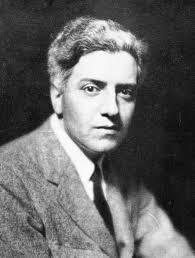
As for contemporary Sherlockians, I'm so glad to have met the Belanger brothers, Derrick and Brian, who founded Belanger Books and run the international online scion Five Miles from Anywhere (meetings the first Saturday of every month).
What subset of Sherlockiana really interests you?Anyone who's seen me in a Zoom meeting knows I'm a bibliophile. My family moved from Miami to New York City when I was thirteen, which meant I could go to the Strand Book Store and the Mysterious Bookshop to feed my burgeoning appetite for pastiches and other Sherlockiana, like Otto Penzler's Sherlock Holmes Library. After college, I was lucky enough to work at St. Martin's Press for a few years, and brought home armfuls of free books. I still collect pastiches but my rate of acquisition has dropped a bit, partly because I've become a pickier reader, mostly due to space limitations. Unfortunately, as I've become more active in the community my interest in Holmesian scholarship has grown, so on balance I'm probably buying as many books as ever.
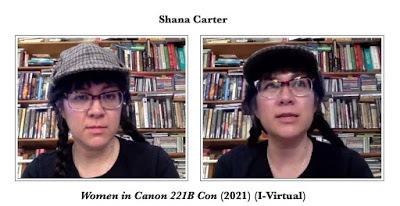
What things do you like to research related to Sherlock Holmes?If I plotted my interests out as a Venn diagram, there would be several that overlap with Sherlock Holmes. In grade school I went through a phase where I was really interested in the paranormal: cryptozoology, ufology, parapsychology, and anything to do with ghosts. I was thrilled when I learned that the man who created Sherlock Holmes was also a member of the Society for Psychical Research and a Spiritualist. That said, anyone who's attended one of the panels where I discussed ACD and Spiritualism knows that I'm more inclined to side with escape artist and scourge of false mediums Harry Houdini, who I was already a fan of before I knew of his connection to Conan Doyle.
Incidentally, my favorite band is They Might Be Giants (they took their name from the 1971 film about a man who thinks he's Sherlock Holmes and the psychiatrist called in to diagnose him, Dr. Mildred Watson), who were playing in Atlanta, GA, the same weekend as the first 221Bcon; and I carry a torch for Buster Keaton, director and star of Sherlock Jr.
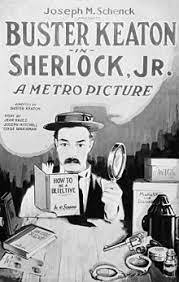
As a fan of classic movies, what are some of your favorite adaptations of Holmes and Watson from days gone by?As a Sherlockian and a silent movie buff, I was thrilled by the rediscovery and restoration of the 1916 film adaptation of William Gillette's Sherlock Holmes and the 1929 German version of HOUN, Der Hund von Baskerville , both of which were long considered "lost" films. The Gillette movie enables us to see the first iconic portrayal of Holmes, but you can tell it was made when film technique was in its early days. The cinematography is far more sophisticated in the German film, which also has fantastic Baskerville Hall sets and a wonderfully unhinged Stapleton played by Fritz Rasp (familiar from Fritz Lang's Spione and Metropolis).
However, the gold standard may still be the 1939 Hound of the Baskervilles from Twentieth-Century Fox, first of the Basil Rathbone-Nigel Bruce films; it has a marvelous soundstage moor, plus the greatest canonical fidelity of that series and, as a corollary, the most competent version of Watson that Bruce would ever play. I also have to give a shoutout to Young Sherlock Holmes, my introduction to the concept of the AU or "alternate universe" (in this case, "What if Holmes and Watson first met as schoolboys and fought an Egyptian cult?") and the first time I saw a fully CGI character (not that I had any idea then what computer-generated images were, I just knew the stained glass knight was awesome in every sense of the word).
You've been on lots of panels at 221B Con over the years. What is a topic you would love to speak on that you haven't had the chance to yet?I'd love to discuss the overlap between Sherlockiana and the H.P. Lovecraft fandom. We could talk about August Derleth, who co-founded Arkham House to print Lovecraft's writings, and then created the Mycroft & Moran imprint to publish his own stories about Sherlock Holmes expy Solar Pons and weird detective fiction by other authors. There are also a surprising number of stories that combine the ACD and HPL canons in various ways, like Neil Gaiman's "A Study in Emerald."
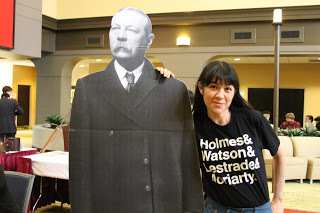
What book would you recommend to other Sherlockians?I'm going to throw a curveball here by picking Naked Is the Best Disguise , by Samuel Rosenberg, who is to Holmesian scholarship what Hunter S. Thompson is to long-form journalism.
Where do you see Sherlockiana in 5 or 10 years from now?I hope that Sherlockian societies continue to hold meetings via videoconference, or in a hybrid in-person/online format, on occasion; it's a great way to make events accessible for people who might not be able to participate for reasons of geography or disability.
Meanwhile, I hope that those Sherlockians who do most of their activity online — bloggers, vloggers, fanfiction authors and digital fanart creators — start archiving their work offline; the internet is wonderful for disseminating content but not always great at preserving it.
* Cover image credit to Steven Rosen Photography* "Women in Canon 221B Con" screengrabs are from Howard Ostrom's Facebook group "Sherlock Holmes on Screens"
June 7, 2021
Buried Among His Old Books [SCAN]
Yesterday I received the best type of mail: BOOKS!
But not just any books, Sherlockian Scholarship. Hard to find and out of print volumes that have been on my TBR list for years.
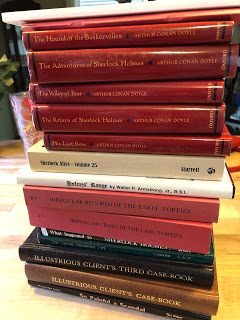
I'm an inveterate reader, but not a book collector. I want to read as much as I can, but don't particularly care what condition a cover is or what printing it is. And I'm very much a cheapskate. Because of these things, getting some of the more obscure Sherlockian scholarship is a inner struggle for me.
But when Denny Dobry posted on Facebook last week about his open house and BSI Trust books sale, I knew I'd find some good stuff. Little did I know just how good it would be!
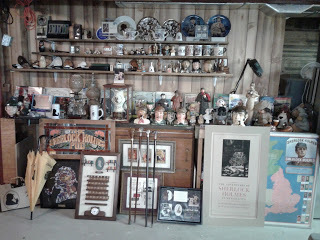
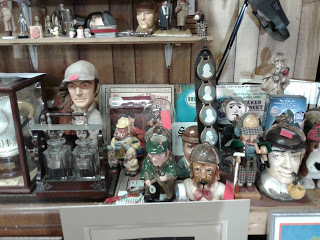
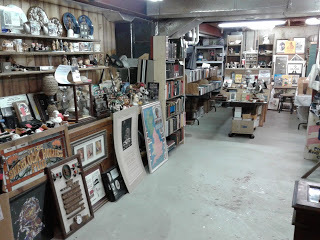
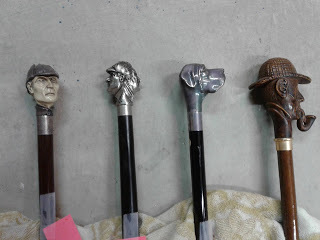
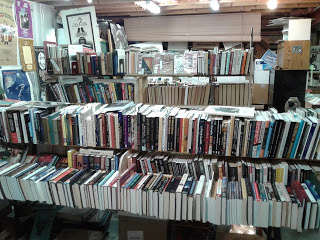
As you can see from the pictures from Denny's post, there is a LOT of stuff for sale here. And since I won't be able to go to his open house on August 21, I just sent him a quick email to see if he had a list of the books available. Denny said it would actually be able for me to just send him my list and he would compare the two. A few days later, I got an email back with titles and prices, and it was time for me to prioritize (remember: cheapskate).
Some of these titles I'd put on my TBR list years ago, so I didn't really remember what they were. Turns out, I wasn't interested in a few of them anymore. Others, Denny had multiple copies of, so I was happy to take the cheaper one and leave pristine copies for someone who would really appreciate its condition.
Once it was all said and done, a check was mailed, and somehow Denny's Medial Mail package to me arrived before my first class envelope to him. (The check's in the mail, I promise!)
So on a Saturday afternoon, I came home to an innocent looking cardboard box on my porch, but what was inside was a treasure:
The Oxford Sherlock Holmes
The Valley of Fear
The Hound of the Baskervilles
The Return
The Adventures
His Last Bow
So Painful a Scandal – John Berquist
Sherlock Alive – Vincent Starrett
Irregular Records of the Early Forties – Jon Lellenberg
Irregular Crises of the Late Forties – Jon Lellenberg
France in the Blood – Catherine Cooke
Holmes’ Range – Walter Armstrong
The View-Halloa – Dana Richards
The Before Breakfast Pipe – David Hammer
The Illustrious Client’s Casebook
The Illustrious Client's Third Casebook
As someone who is always on the lookout for Sherlockiana to read, I like to keep a healthy backlog of things to read as shown in my Sherlockian TBR shelf below. These 15 new titles will get added to my bookcases of things to read and I feel very content knowing I'm not going to run out of reading material any time soon!
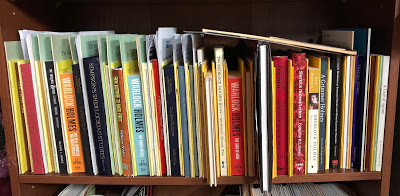
For those of you who can make it to Denny's house in Pennsylvania on August 21, here's the information on his open house:
Book Fair and Open House – Mark your calendar for August 21,2021 and plan to attend a Book Fair and Open House at Denny Dobry’s 221b Baker Street sitting room re-Creation in Reading, Pennsylvania. The re-creation has been described as the most detailed and accurate of all the existing re-creations. Thousands of books will be available for purchase at rock-bottom prices. These books have been donated to support the Baker Street Irregulars Trust Historical Archives. The selection includes many editions of the Canon, rare Sherlockian Scholarship titles, hundreds of pastiches & parodies, a variety of non-Sherlockian Doyle’s works, titles from other mystery writers (Sayers, Christie, Queen, Starrett etc.), an extensive Christopher Morley & P. G. Wodehouse selection and crime & British reference works. In addition, many items such as statues, glassware, mugs, games, jigsaw puzzles and posters will also be available. Publications by the Baker Street Irregular Press will also be available for sale. This sale likely provides the widest selection of Sherlockian items available anywhere.
The hours of the Open House/Book Fair will be from 10:00am until everyone is gone. The address is 5003 Stony Run Drive, Reading, PA. Lunch will be available. Reading is 100 miles from Manhattan, 80 miles from Baltimore and 40 miles from Philadelphia. Start planning your car pool.
If some out of towners stay over Friday and/or Saturday night, I would be happy to arrange for getting together for dinner.
You may contact Denny at dendobry@ptd.net.
May 30, 2021
Interesting Interview: Nancy Holder
Last weekend, Nancy Holder won a Bram Stoker Award for Mary Shelley Presents. And this wasn't her first! She's won five others before this year. Clearly, Nancy Holder is a horror writer at the top of her profession. So where does she go after winning another major award? To be this week's Interesting Interview!
Nancy Holder is one of the friendliest Sherlockians I've know but I've never met in real life. Through Twitter and Zoom, we've gotten to know each other and she is just a delight! I'm lucky enough to be part of her newest project, Sherlock Holmes of Baking Street, which she co-edited with Margie Deck and let me tell you, this is a going to be a fun project. The lineup of authors is almost as impressive as Nancy's bibliography. Oh, you think she's just an impressive Sherlockian? Do the shows and movies Buffy the Vampire Slayer, Wonder Woman, Ghostbusters, Wishbone, Sabrina the Teenage Witch, and Teen Wolf ring a bell? Because Nancy has written novelizations for all of them (Her contributions for Buffy alone are more than 20). And that's not even mentioning all of her original books! This lady should have pages and pages on the internet devoted to all of the books that she's put out over the years. Oh wait - she does.
But we are here to focus on Nancy's love of Sherlock Holmes. So here we go with this week's Interesting Interview!
How do you define the word “Sherlockian”?
A Sherlockian is someone who has more than a passing interest in Sherlock Holmes and his world. They have read the Canon and know something about the era in which Sir Arthur Conan Doyle and John H. Watson lived and wrote.
How did you become a Sherlockian?
Basil of Baker Street was my gateway into Sherlock Holmes. My father, who gave me the book when I was in the second grade, mentioned that the character of Basil was named after Basil Rathbone, an actor who portrayed Sherlock Holmes in movies. My first Holmes movie was one of Rathbone's wartime films, and I saw it on a Saturday afternoon TV show called Science Fiction Theater. I was a bit confused because Basil the mouse is a creature of the Victorian age, but this movie was set during World War II. I also didn't know why a Sherlock Holmes movie was being presented as a science fiction film. So using my kid brain, I decided SH was a time traveler!
My father and grandfather were huge mystery readers and I read mysteries as a little girl, but mostly Nancy Drew and the Hardy Boys. Then I started reading horror and loved Edgar Allan Poe. I read the C. Auguste Dupin stories, which led me back to Sherlock Holmes. This time I stayed, and read the Canon.
Through my work as a horror writer, I met Les Klinger, and found out he was a BSI. He introduced me to the BSI world, which I explain to civilians is like the Rescue Aid Society in Disney's The Rescuers. (I'm a fan of The Great Mouse Detective, of course!)
Les Klinger, Dana Cameron, and I at "WonderCon," a popular culture convention in Anaheim, California. Dana and I ate Easter brunch together at a Disneyland restaurant that weekend.What is your favorite canonical story?
Given my professional background in horror and dark fantasy, it's no surprise that it's The Hound of the Baskervilles. It's capital G-Gothic, with a gloomy, foreboding moor; a possibly haunted house: a woman weeping in the middle of the night; buried family secrets; murder, possibly by supernatural means—what's not to love?
Who is a specific Sherlockian that you think others would find interesting?
My co-editor Margie Deck is a well-kept secret to some, but the friend of many Sherlockians world-wide. Margie is one of the most creative people I know, making visual art and writing. She works on the John H Watson Society annual treasure hunt, a position she has held before. We've been teammates in the past. She knows her Canon backwards and forwards and she has an astonishing Sherlockian library. Her Canon crush is John Clay. She created a beautiful rendering of the Curse of the Baskervilles, which hangs in my office. She's also a highly skilled amateur baker, which occasioned the inspiration for Sherlock Holmes of Baking Street, although Baking Street is not a cookbook and it's not all about baking. She and her husband cruise around Washington state in his Mustang and she's a devoted dog mom.

What subset of Sherlockiana really interests you?
I'm interested in placing the work of ACD in a broad context, exploring his influence on other writers who in turn influenced him. I really enjoy discovering who else was working on detective fiction while ACD was involved with Holmes. A while ago I wrote a pastiche pairing Holmes/Watson with Lady Molly of Scotland Yard. My big secret project is to someday write a book exploring the similarities of the lives and literary output of Mary Shelley, EA Poe, and ACD. And of course, as you would expect, I'm interested in the great British baking of the Victorian age.
What things do you like to research related to Sherlock Holmes?
I like learning more about the times in which SH live(s)--Victorian, Edwardian, and post WWI. My sister used to be a reenactor specializing in the American Civil War (also called the War Between the States) and her area was early medicine/sanitation. Through her I learned about Florence Nightingale. I love intersections like that. I love knowing that ACD visited Tacoma the same year Walt Disney moved to Hollywood and opened his studio (1923). Disney moved there in part because his brother had tuberculosis and he sought a kinder climate--a familiar familial situation for us Sherlockians!
And I love researching the food of the times. There are so many rituals surrounding food--what people eat says a lot about who they are. I love it that Holmes goes out for a nice meal now and then. I enjoy reading about the details of Victorian baking--it hadn't dawned on me that early Victorians didn't have oven thermometers. Things like that.
How did you and Margie Deck come up with the idea for Sherlock Holmes of Baking Street?
Margie herownself came up with the idea. She was talking with another Sherlockian about the pandemic mania for baking and the funny pun of baking/Baker Street. That person said "that would make a cool book." Margie came to me and asked me if I would be interested in editing the book with her. I've been an editor for many years. I've edited about half a dozen other anthologies (non-Sherlockian), and I loved her idea--and I love her! We are in a number of scions together, our home scion being the Sound of the Baskervilles here in Washington state. But it was Margie's idea from the get-go.
Many folks might not be familiar with The Domino Lady, that you partnered up with Holmes for a book a few years back. What was it about The Domino Lady that appealed to you and why did you think she would pair nicely with Holmes for your adventures?
I've been a writer on The Domino Lady (as we say in the comic book business) for many years. I've written Domino Lady comics and short stories, and I also co-created her daughter for a new set of stories that will be released soon. The Domino Lady is a character from the pulp era of the 1930's--she's Berkeley grad socialite Ellen Patrick by day and a sexy crime-fighter by night. She wears a domino mask and a slinky gown when she's on the prowl. She's brave and saucy and bold. I love her.
I wanted to write Sherlock Holmes-specific comics forever but wasn't getting the opportunity, so I "guest-starred" him in my work on The Domino Lady. I've done 2 comics and a short story pairing Holmes and The Domino Lady for Moonstone Books. In the comics, I sent him to 1930's Egypt with Ellen. In my prose short story, he thwarts her attempt to steal the Crown Jewels from the Tower of London.
What book would you recommend to other Sherlockians?
A book of mine? Sherlock Holmes of Baking Street! Or the novelization of the movie Crimson Peak. It's very Gothic and set in during Sherlockian times (1900). A Sherlockian book by someone else? Les Klinger's annotated volumes. And I love Bonnie MacBird's pastiche novels.
Bonnie MacBird and I at the Criterion Bar in London (renamed Il Granaio)Where do you see Sherlockiana in 5 or 10 years from now?
The introduction of Zoom and Skype has really opened up the Sherlockian community/made us all aware of just how many communities we actually are. I've been able to attend meetings of many societies I've only wished I could get to before the pandemic. I've made new friends and gotten involved with societies with really specific interests, such as Theatre-Goers Homeward Bound, the Tea Brokers of Mincing Lane and the Barely Coronets.
Like a lot of Sherlockians, I came for SH and stayed for the Sherlockians! I think this interconnecting will expand and draw in folks who see SH in all kinds of unusual ways. As he is so recognizable, I think creative people will continue to focus on him; I see enhanced virtual reality films and games, making him even more present in the zeitgeist.
May 16, 2021
Pinnacles Which Marked the Site [BOSC]
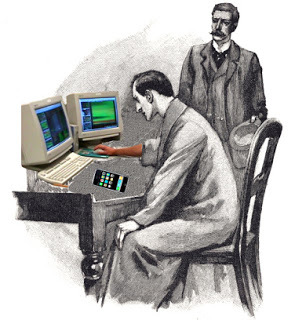 Two new Sherlockian sites which could more easily connect folks our hobby and change the way we use the Canon debuted this month.
Two new Sherlockian sites which could more easily connect folks our hobby and change the way we use the Canon debuted this month.The first, Chapter and Verse Holmes, may at first make some people scratch their heads and ask why. All I can say to answer that is that it was created by the genius of Paul Thomas Miller. If you aren't familiar with how this man's particular mind works, I would encourage you to read my interview with him.
Paul has a knack for creating things that no one has thought of before and often things that people wonder why it was needed. But his work ultimately ends up being delightful and sometimes even useful. My prediction is that Chapter and Verse Holmes will be very useful to folks who are willing to embrace it. I have already used it a few times to search for a certain item in the Canon. And since I haven't had the need to cite his work yet, this week's post title seems like an appropriate time: (BOSC 1:368)
And don't just take my word for it, Watson himself points out that you can always learn something new (STUD 6:3). Even if you end up not adopting this new tool, I would heartily recommend reading Paul's introduction in the opening pages of the pdf. You would think after creating his own chronology, he would've learned not to take on such large tasks anymore, but it seems like the man is willing to sacrifice his eyesight and time with his family for our hobby. It's the least we could do to try it ourselves (SIGN 1:13)
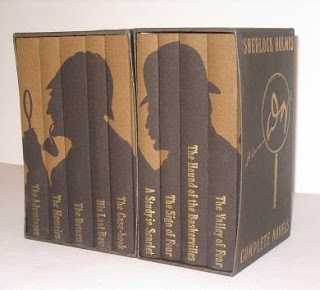
The other site that launched a few days ago is one I'm very excited about, and not just because I'm part of the team working on it. Sherlockian Societies is a page hosted by The Beacon Society, but isn't strictly about educating students. It's a tool that will be used for any student of the Canon. The team behind this site includes Steve Mason, Mike McSwiggin, Greg Ruby, Tamar Zeffren, and myself. I'm in unbelievably good company here!
The purpose of this site is to be a central hub for information about any active Sherlockian society out there. It's not trying to be an exhaustive collection of information, but a starting point for many Sherlockians. The goal is to connect anyone interested with in-person groups that they can read about and hopefully join.
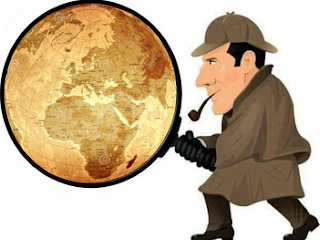
Looking to see if a city has a society you could check out? The interactive map that was originally hosted on the Crew of the Barque Lone Star site can be found on SherlockianSocieties.com
Want to know what a Sherlockian society even is? An overview of what societies can be and the different types can be found on SherlockianSocieties.com
Curious about what publications societies put out? A treasury of society newsletters is being built on SherlockianSocieties.com
Want to read about specific societies? Monthly spotlights of societies will be posted on SherlockianSocieties.com
Trying to find that piece of information you sort of remember but can't quite put your finger on? Links to The Baker Street Almanac, Sherlockian Calendar, and Scuttlebutt from the Spermaceti Press can be found on SherlockianSocieties.com
Heard about a great presentation from a meeting and want to see what it was all about? Text from society presentations will be hosted at SherlockianSocieties.com
So do yourself a favor this week and set aside some time to spend on Chapter and Verse Holmes and Sherlockian Societies. Otherwise, you may just end up like Jefferson Hope (STUD 10:101).
May 9, 2021
Interesting Interview: Nicholas Utechin
Just when I thought Sherlockians - I'm sorry, Holmesians can't get any nicer, along comes this week's Interesting Interview subject, Nicholas Utechin. Since I first got into this hobby, Nick has been one of the names that I've seen time and time again. And every time it came up, I've always been impressed with the man's work, knowledge, and longevity in this hobby of ours. Well, let me tell you, those all pale in comparison to what a nice guy Nick is! Our email exchanges this week in preparation for tonight's interview have been a highlight every time I got something from him in my inbox.
If you're reading this blog, there's a good chance that you know Nick Utechin as the longtime editor of The Sherlock Holmes Journal, or author of a number of books such as Sherlock Holmes at Oxford or Sherlock Holmes: Amazing and Extraordinary Facts. And the man isn't stopping any time soon! He's just edited a new book celebrating the history of the Sherlock Holmes Society of London in its 70th anniversary year, This August and Scholarly Body, he's been popping up in Zoom meetings all over the place for presentations, and he brought canonical insight to a Sherlockian puzzle that came out last year! And I think his knowledge, passion, and connections all come down to two things: he loves Sherlock Holmes and he's a great guy. So let's kick off the month of May with a true delight, Nicholas Utechin!
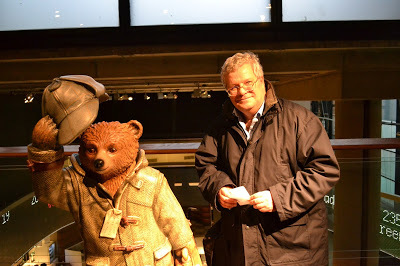
How do you define the word ‘Sherlockian’?
In the same way that I would the word ‘Holmesian’ – which we use more often over on this side of the Atlantic! Basically, anyone who wishes to take matters just that bit further than merely reading and enjoying the stories. You may want to dress up in Victorian clothing, you may be able to afford the odd Beeton’s Christmas Annual or Lippincott’s Monthly, you may adore Gillette, Saintsbury, Wontner or Wilmer, or you may enjoy playing “the game” – that is, the pseudo-scholarship.
Those who espouse “fandom” are not necessarily Sherlockians.
How did you become a Sherlockian?
I became a Holmesian in 1966, at the age of 14. My mother had tried me on The Hound of the Baskervilles some years earlier, but it was a touch too early and I was frightened. Then my great-aunt wisely gave me the John Murray Omnibus edition of the Short Stories when I was 12. The crucial breakthrough came when my mother took out of the public library the English edition of Baring-Gould’s Biography – and there at the back was an address for The Sherlock Holmes Journal, of which I had previously never heard. I wrote to the Editor, the Marquess of Donegall, and his assistant (an unsung heroine called Miss Cecelia Freeman) put me in touch with the Sherlock Holmes Society of London. It really all spiralled out of control from there.
The fact that I am a third cousin twice removed of Basil Rathbone (my middle name is Rathbone) may have helped.
What is your favo(u)rite canonical story?
“The Bruce-Partington Plans”. It has absolutely everything: dense fog, Mycroft, a proper mystery, a good murder and splendid deductions and denouement. It has the added benefit of being a chronologist’s nightmare: there is absolutely no work to be done on the dates of the case!
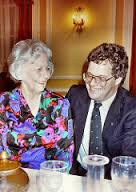 With Dame Jean Conan Doyle in the early 1980s
With Dame Jean Conan Doyle in the early 1980s
Who is a specific Sherlockian that you think others would find interesting?
This is an invidious question, for which, I fear, I cannot give an answer. I have been around for such a long time plying this great hobby and meeting or corresponding with so many other enthusiasts that to pluck one name simply is not on. I apologise!
What subset of Sherlockiana really interests you?
No single one. I was lucky enough to start collecting the classic works of scholarship when they were not yet too expensive. In more recent years, I have managed to put together a reasonable number of single issue Strand Magazines containing Holmes stories; I still need (please?!) one or two Collier’s Magazines with Steele covers, and have picked up a few Harper’s Weeklies.
Autographs of actors associated with Holmes are fun to accumulate.
It has long been apparent that I shall never be in a position to own an original Holmes drawing by Paget or Steele, so I have begun a little mini-collection of non-Sherlockian works by artists who have done Holmes illustrations: thus, I have an illustration Sidney Paget did for The Tragedy of the Korosko, an unpublished (I believe!) watercolour by his brother Walter, and a 1916 draft of a Collier’s cover by Dorr Steele, as well as works by other lesser-known artists.
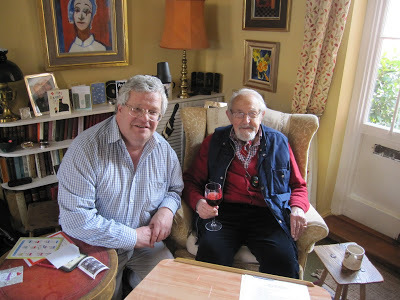 With Douglas Wilmer at his home to record an interview for the Baker Street Irregulars
With Douglas Wilmer at his home to record an interview for the Baker Street Irregulars
What things do you like to research related to Sherlock Holmes?
I have been fairly eclectic. My first published article – back in 1969 – pointed out the lies Holmes told Watson at the outset of FINA: in later years, I have proved that Holmes murdered Moriarty at the Falls, discussed Moran’s shooting of Ronald Adair (indeed, I have written long mini-biographies of the Professor and the Colonel), and worked out Mycroft’s true role in EMPT. During the 30-years I edited The Sherlock Holmes Journal, I had quite enough to do without contributing to the scholarship; but since then I have hit upon the main reason for Holmes having gone to Montpellier during the Great Hiatus, worked out why Sherlock turned down a knighthood, and identified “Emsworth, the Crimean VC” (BLAN)…and lots more.
Back in 1977, I entered what has become known as the “Controversity” with my brochure Sherlock Holmes at Oxford; in 2018, Gasogene Books published my Complete Paget Portfolio.
So: a fairly broad spectrum – helped perhaps by being friends with editors and publishers!
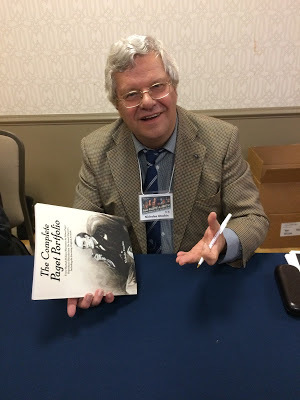 Launching my Paget book at the Bloomington SH conference in 2018
Launching my Paget book at the Bloomington SH conference in 2018As a long-time member of the Sherlock Holmes Society of London, what are some positive trends you've seen in our hobby over the years?
That’s a very broad question – and again not an easy one to answer. It goes without saying that the admitting of women to such groups as the Baker Street Irregulars and the Sons of the Copper Beeches was long overdue (although I freely admit that I was made a member of both when they were still men-only.) The way that younger people continue to be ensnared in the web of Sherlockiana in all sorts of ways is a triumph: the re-inventions in the BBC’s Sherlock and the two Guy Ritchie films were, as we all know, of paramount importance. While Enola Holmes was not a Sherlock film and and a decision has been made not to renew The Irregulars, Netflix has successfully continued the general media journey. Why there were so many (any?!) series of Elementary is utterly beyond me, but anything that manages to continue to spread the word 134 years after STUD first appeared is “a good thing”.
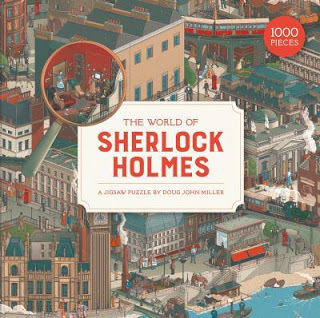
One of the best things I did during lockdown last year was The World of Sherlock Holmes puzzle and I was absolutely delighted to see your explanatory essay that identifies so many of the Easter eggs throughout the puzzle. How did you become involved with this project and what was your role in the development of the puzzle and its explanation?
I’m glad you enjoyed it (I can’t do jigsaw puzzles at all…let alone 1,000-piece ones!) This is an easy question to answer: I was approached by the producer/manufacturer and asked to come up with essential characters, essential objects, a few extra-canonical personages, and some locations to be hidden around the picture. I then had to write the accompanying text/crib accounting for who everyone/thing is. I had no contact with the artist whatsoever: he just had to work with the material I provided. The fact that he is primarily an architectural illustrator is fairly apparent. Ludicrously I forgot Scotland Yard – and sadly I was only paid a small buy-out fee and so am not on royalties!
They also want me to come up with some thoughts about a set of Sherlock Holmes playing cards – which is proving somewhat problematic.
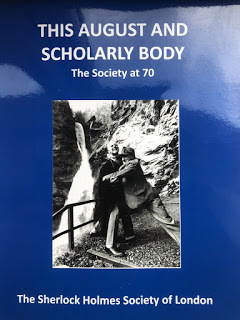
What book would you recommend to other Sherlockians?
So, so difficult to come up with just one…Since you are compelling me to do so, I shall have to say D. Martin Dakin’s A Sherlock Holmes Commentary. The mixture of scholarship, clever writing, and humo(u)r is, I think, unparalleled in our field. I don’t know how many of your readers subscribe to The Baker Street Journal (they all should), but there is more on Dakin in an article I had published in Vol. 66 No. 1 (Spring 2016).
Where do you see Sherlockiana in 5 or 10 years from now?
I couldn’t begin to guess. The only thing I so hope for is that the printed page will still exist. I would say that, wouldn’t I, since I am the age I am, and chair the Publishing Sub-Committee of the Sherlock Holmes Society of London. Rude as it is to a blogger such as yourself, nothing beats hard copy.
That said, as mailing charges mount up grotesquely, who knows?
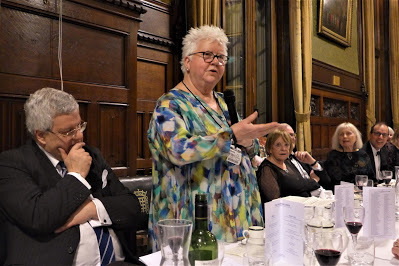 With Val McDermid at the SHSL Annual Dinner, 2020
With Val McDermid at the SHSL Annual Dinner, 2020
April 25, 2021
Interesting Interview: Barbara Rusch
The name Barbara Rusch was one I'd hear long before I actually got to meet this lovely person. She is a very active Canadian Sherlockian, being a Master Bootmaker and Vice Chair of The Friends of Arthur Conan Doyle Collection at the Toronto Public Library. You'll also see her on the roll for the Baker Street Irregulars and the Adventuresses of Sherlock Holmes and her byline appears all over the place!
But I got to meet Barbara through email last year when she was recruited to be part of an anthology I co-edited. And just like she did with her interview questions below, Barbara goes above and beyond when it comes to talking about this hobby of ours! And I typically ask for 4-5 pictures to go along with interviewees answers, but Barbara sent along more than double that, and there were too many good ones to pass up! I also got to meet Barbara and her delightful husband, Donny, at the Minnesota conference in 2019, and let me tell you, they both wonderful people. So settle in, and get ready for a fun interview with the queen of Victorian ephemera, Barbara Rusch!

How do you define the word “Sherlockian”?
A question I’m asked every time I use the word amongst the uninitiated. Specifically, “A wha?” “Well,” I respond, “a Sherlockian is anyone interested in the tales of the world’s most iconic detective.” Of course, for me, it extends far beyond a casual study. I’ve been devoted to exploring the stories on a variety of levels – from their literary and cultural components to psychological and socio-sexual perspectives – in addition to the life of their creator, which I find equally fascinating, for decades now.
How did you become a Sherlockian?
I read my first Holmes tale as a teenager, when my grandmother’s tenant, Mr. Ash, passed away, leaving his library behind, and along with it a legacy of incalculable value. Amongst the books was a slim volume of The Adventures, and I recall “The Speckled Band” as the first story I read, inducing a terrifying nightmare of a whistling snake slithering down the wall and into my bed. Not sure if it was no more than a Freudian dream sequence brought on by puberty or a frightening re-enactment of a Sherlockian vision, but horrifying nonetheless. In addition to the enthralling mystery, I found the Paget illustrations riveting, their fifty shades of gray dissolving at the edges, leaving me to wonder what might have been happening just beyond the margins.
Years later, when I was pregnant with my son, and suffering from morning sickness 24 hours a day for 3 months, I went looking for a book – any book – to take my mind off the nausea. By the end of the first trimester, I had finished off all 60 tales and was feeling a good deal better, in addition to having discovered a lifelong superhero.
In 1983, I was doing some research on 19th-century ephemera and its relation to social and commercial history. The librarian at the Toronto Reference Library, Janice McNabb, suggested that I might find the Bootmakers of Toronto, the Sherlock Holmes Society of Canada, of interest, since it delves into all aspects of Victorian and Edwardian life. At the first meeting I attended, the speaker was modelling Victorian women’s clothing, which she was removing layer by layer, stripping down to her corset and knickers. This is the group for me, I thought. And the rest, as they say, is history – at its finest.
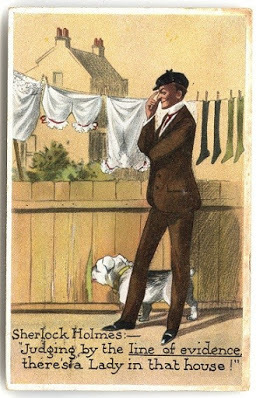
What is your favorite canonical story?
I’m drawn to those stories which I find particularly intriguing, opening up to questions that lead down unexplored paths. Just what was the subject of that infamous photograph of Irene and the King of Bohemia? Surely it couldn’t be a simple image of the two of them posing sedately together. Upper class gentlemen, including royalty, married or not, were notorious rakes, and an armload of mistresses was a sign of virility rather than notoriety. Edward, Prince of Wales, the Illustrious Client, never allowed his marriage to Princess Alexandra to interfere with his love life.
So what did that photograph contain of so scandalous a nature? My opinion is that it was not simply scandalous, but salacious, perhaps more suitable for a French postcard than a royal memento. I’d love to have a copy of it in my collection.
Who is a specific Sherlockian that you think others would find interesting?
I have great admiration for Dan Posnansky, both as a learned and dedicated Sherlockian, and as a collector of all things Doylean. I regard him as something of a mentor. My husband, Donny Zaldin, another Sherlockian I admire, and I were privileged to take a tour of that splendid collection before it went up for auction a few years ago, and I’m honored to now call a few of his prized pieces cherished treasures which have now found their way into my own collection.
I also have tremendous admiration for Sherlockians who singlehandedly run entire societies, amongst them: Mike Ranieri of the Bootmakers of Toronto (Canada), Steve Mason of The Crew of the Barque Lone Star (TX), Ben and Sue Vizoskie of The Three Garridebs (NY), Ron and Carol Fish of Mrs. Hudson’s Cliffdwellers (NJ), Monica Schmidt of the Younger Stamfords (IA), Phil Dematteis of the Hansom Wheels (Columbia, SC) and Jay Ganguly of the Sherlock Holmes Society of India. Noteworthy Sherlockians all.
What subset of Sherlockiana really interests you?
Anything that resonates of 19th- and early 20th-century culture is of interest to me. The Holmes tales are, as Watson observes, “a perfect quarry for the student not only of crime but of the social and official scandals of the late Victorian era.” I’m intrigued by certain aspects of “Black Peter,” which led me to an examination of domestic violence in Victorian England, while “The Creeping Man” forged an unexpected connection to eugenics and the subject of the monster in Victorian literature.
I’m also fascinated by Conan Doyle’s belief in Spiritualism and what led him to place his trust in two young girls who claimed to have taken photographs of fairies. I’ve written a novella on the subject of the Cottingley Fairies, beautifully illustrated by Laurie Fraser Manifold. I’m currently searching for the right publisher.
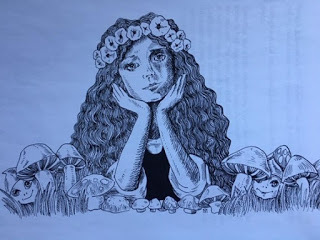
What things do you like to research related to Sherlock Holmes?
To quote Holmes’s chronicler again, “The problem has always been not to find but to choose.” Unlike Seinfeld, which was “a show about nothing,” the Canon is a treasure trove of everything, a place where I have been fortunate enough to find an outlet for my insatiable curiosity of all things Victorian. As Nathan Garrideb expressed it, “I am, in fact, the student of many subjects, and you may be surprised at the universality of my interests. The general effect is amiable though eccentric. One day a profession might be made out of what up to this time has been the merest hobby.”
For the past three years I have been pleased to contribute a regular column in Canadian Holmes, the quarterly journal of the Bootmakers of Toronto. “The View from the Bow Window” is an examination of various aspects of Victorian and Edwardian life as they relate to the Holmes tales, often illustrated with treasures from my collection. As our detective himself observes, “To anyone who wishes to study mankind, this is the spot.” The subjects I’ve explored include: pipes, brandy, the London Underground, cursed gems, the history of wax figures, Prince Albert watch chains, commonplace books, Stradivarius violins – and bow windows. I am eternally grateful to the Sherlockian movement for affording me a platform for my creative urges.
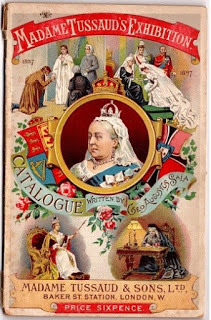
Your collection of Victorian ephemera is unbelievably impressive. How did you start collecting items from this time period and what are one or two of your favorite items in your collection?
My fascination for the period led naturally to amassing objects, mostly of paper, and representative of their time. Their significance cannot be overstated. Maurice Rickards, founder of the Ephemera Society UK, wrote in his landmark book, Collecting Printed Ephemera, “In every fragment of ephemera resides the genius papyri, the spirit of the paper – the abiding essence of its message, origin and content.” It presupposes that the paper is somehow possessed of its own DNA – and an immortal soul. My treasures began with a collection of commercial culture – advertising trade cards, calendars, and posters – then progressed to photo albums, valentines, and holographic material such as illustrated friendship albums, private journals and personal letters, anything to do with Queen Victoria, (who, after all, was the centrepiece of the age to which she lent her name), Houdini, and, naturally, Sherlock Holmes and ACD.
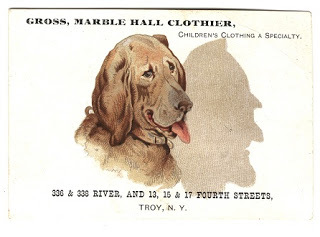
Like Horace Harker, “All my life I have been collecting other people’s news.” How to pick one or two choice items? It’s as if you’re asking me to choose a favorite from amongst my children. However, I, like Sherlock Holmes, “will dive my arm down to find something a little recherché … a small wooden box, a crumpled piece of paper and an old-fashioned brass key.” The wooden box features a brass plaque on the lid which identifies it as a gift proffered in 1872 by ACD’s mentor and the inspiration for the great detective, Dr. Joseph Bell, to his prized pupil, Edwin St. George Baldwin, a medical student from Toronto attending the University of Edinburgh, and contains a gruesome-looking set of surgical knives.
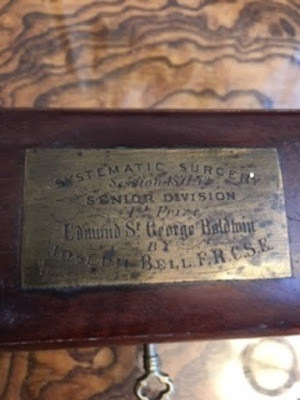
The crumpled piece of paper? Sorry, but it’s impossible to choose just one from amongst several: a letter from Conan Doyle to Bram Stoker, writing to connect on the subject of a project together (which somewhat fancifully feels like correspondence between Sherlock Holmes and Dracula), another to a friend of Houdini’s stating that he and his Spiritualist crew were foretold of his impending death, one to Sidney Paget sending greetings and regrets that the artist wasn’t illustrating his next story after all, and a cheque signed by Charles Dickens and sent by his granddaughter to famed actor William Gillette in exchange for a signed photograph.
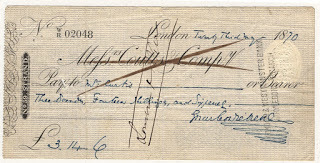
The old-fashioned brass key is an easy one: for many years I have worn one of Houdini’s handcuff keys around my neck, its provenance a fascinating story in itself. Whether or not it helps me escape from tight spaces and dangerous situations is anybody’s guess, but as a good luck charm it sure beats a rabbit’s foot. And I would be remiss if I didn’t at least make mention of my collection of eclectic undergarments, specifically the oversized knickers of “a certain gracious lady,” and a boxful of Lady Conan Doyle’s intimate apparel culled from her bedroom drawer at Windlesham, Crowborough.
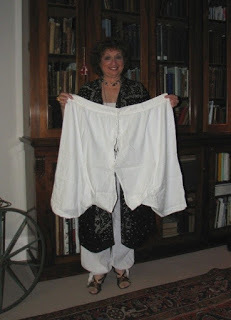
How did you decide to bring Edgar Allan Poe, Oscar Wilde, and Harry Houdini together to hash out their issues with Arthur Conan Doyle in your play, "The Crossing: Three Authors in Search of a Character?"
It’s difficult to know whence such inspiration – or craziness – originates. I was aware that Poe, Wilde and Houdini, three literary and cultural titans with enormous egos, all had unresolved conflicts with Conan Doyle. What I could not have imagined when I embarked upon this journey was just how much they had in common – how similar their narratives, their insecurities and their recriminations. It began to feel as though they were always meant to find themselves in a room together (in this case a barren chamber in the afterlife), engaging in this dialogue, their resentment and appreciation for Arthur Conan Doyle their common point of intersection. A Mystery Interloper (guess who?) only adds to the tension and suspense. Moreover, it was very gratifying to be able to incorporate relevant images from my ephemera collection into the text.
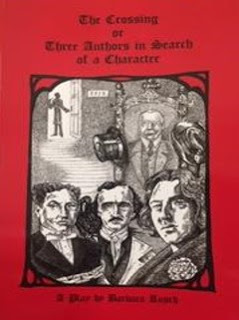
What book would you recommend to other Sherlockians?
I read some of Conan Doyle’s lesser-known short stories in preparation for a pastiche published in an anthology of the Crew of the Barque Lone Star, and was enthralled by his tales of mystery and some of the so-called uncollected tales. The man had a way of gripping you by the hair follicles and carrying you along to the end. His tales of horror, like “The Leather Funnel,” which in my opinion rivals Poe’s “The Pit and the Pendulum,” on a similar subject, and “The Brazilian Cat” are absolutely terrifying.
While we’re all aware that The Lost World was the inspiration for “Jurassic Park,” “The Ring of Thoth” which essentially forms the plot of the first “Mummy” film, is rarely credited. Some of his novels, like Rodney Stone, are hilarious. The man had a great sense of humor. I highly recommend a glance beyond Sherlock Holmes.
Where do you see Sherlockiana in 5 or 10 years from now?
The popularity of Sherlock Holmes will never wane, and each succeeding generation has a new take on the quintessential detective. It’s my fervent wish that our current infatuation with Benedict Cumberbatch, Robert Downey Jr. – or whoever comes next – will not overshadow our hero. As thrilling as the films and television shows may be, no visual medium can hope to surpass the canonical writings and the wonderful adventures Conan Doyle leaves to our imagination.
April 18, 2021
It Was My Game to Watch [HOUN]
This week's post is a toast I gave at the Sherlockians of Baltimore meeting on Saturday.
The tradition of being investitured into the Sherlockians of Baltimore comes with a title linking you to that city, and being a baseball fan there was only one choice for me: The St. Louis Browns.
Ah, that long-lived Baltimore institution of St. Louis baseball.
So imagine, if you will, it is spring 1902. The Hound of the Baskervilles has just been published in book form. Arthur Conan Doyle would be knighted later that year. And St. Louis had a new baseball team!
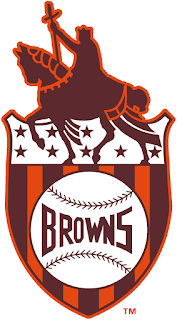
The St. Louis Browns took up residence in the newly built Sportsman’s Park, where they would play for over half a century. They would even go on to win the American League pennant while there, but another local team would beat them in that year’s World Series, but we’re not here to talk about St. Louis’s other baseball team.
(Excuse me for a second. I'm a little thirsty so I will stop and take a quick sip.)
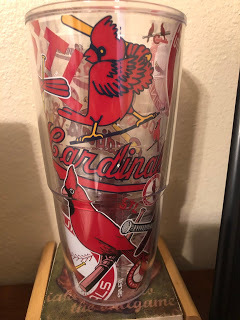
The St. Louis Browns were not known for being a good team. In fact, in their 52 years of playing in St. Louis, they only had twelve winning seasons. But they were a fun team, participating in plenty of stunts, including letting fans in the stands manage a game and trying to cheat Ty Cobb out of 1910’s batting title.
But my favorite of their stunts came in August 19, 1951 when pinch hitter Eddie Gaedel stepped up to the plate. What was so great about this? Gaedel was a 3 foot 7 little person, who was so small he had to borrow the bat boy’s jersey with the number ½. The Tonga-sized Gaedel never swung his bat, the pitcher never found the strike zone, and the shortest player in baseball history walked on four straight balls.
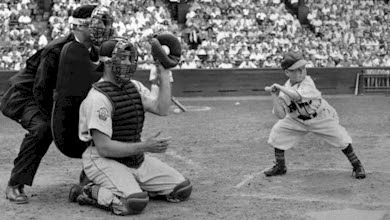
Sadly, these stunts weren’t enough to make money. While fun, St. Louis baseball fans hearts’ belonged to a different team.
(Phew, it's bright in here. I better take a second and put a hat on.)
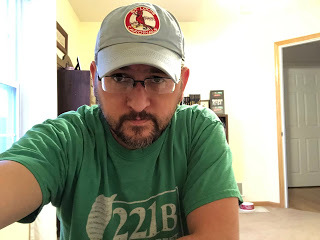
Realizing St. Louis wasn’t big enough for two teams, the Browns eventually moved to Baltimore in 1954, where they were renamed The Baltimore Orioles, FINALLY connecting this toast to Charm City.
So here’s to the St. Louis Browns, who were last place in St. Louis baseball, and turned in to the Baltimore Orioles, who are currently last place in their division. But hey, at least we didn’t have to have a toast to the Yankees!
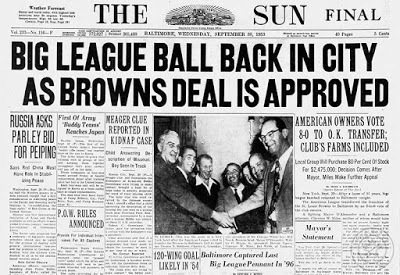
April 11, 2021
Interesting Interview: Joe Eckrich
Man, I don't know where to begin with the introduction for this week's Interesting Interview. Joe Eckrich has been a Sherlockian mentor to me for years. Some of my fondest Sherlockian memories are the car rides he and I have taken to events or to visit with folks. This is a guy who is a Sherlockian down to his bones. He collects books, autographs, friends, and knowledge like you wouldn't believe.
But first and foremost, Joe is a great guy. He founded my home scion, The Parallel Case of St. Louis, and ran it for decades. He's been on the planning committee for our first Holmes in the Heartland, the one that had to be cancelled, as well as lots of the Holmes Under the Arch conferences long ago. Joe travels to as many events and meetings as he can and is always up for meeting new Sherlockians. As you'll see below, Joe's passion is the friendships he's made along the way. If you talk to anyone who is involved in the wider Sherlockian world, they will either know Joe Eckrich, or have heard of him. And I will bet money that they all have good things to say.
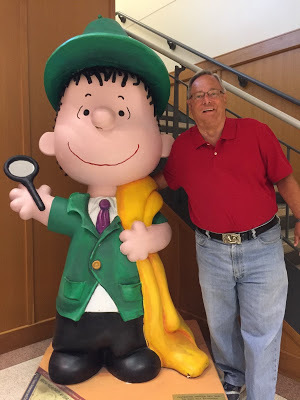
How do you define the word “Sherlockian”?
I loosely define it as anyone interested in Sherlock Holmes, in whatever media. I believe in a “big tent” theory in which there is room for everyone, regardless of their interest, even if it doesn’t match mine. In a narrower sense, I suppose, I would define it as anyone involved in organized Sherlockiana in any way. I have been a member of various Sherlockian societies for over 45 years and have spent some of my happiest times at various Sherlockian events. I would hope anyone truly interested in Sherlock Holmes could eventually find their way to such a group. And, of course, however they might have arrived at Sherlock Holmes, I would hope they would appreciate the written word, the actual stories themselves.
How did you become a Sherlockian?
Like most things I suppose it was a combination of things. I began reading and enjoying detective fiction at an early age and, along with my mother, watched a lot of old movies on television (The Early Show, The Late Show and The Late, Late show) many of them mysteries, including the Rathbone Sherlock Holmes films, which I very much enjoyed. Rathbone is still my favorite Holmes. Anyway around seventh grade I would routinely ride my bicycle to the local public library and take out books, usually mysteries. They had the one volume Complete and I would periodically check it out and read as many stories as I could before I had to return it.
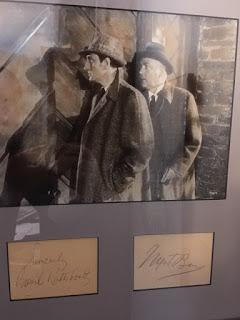
Flash forward quite a number of years and Nicholas Meyer published The Seven-Per-Cent Solution and the floodgates opened. Books by Michael Harrison and Michael Hardwick and others were being published. I would visit local bookshops on my lunch hour and pick up whatever I could find, including a remaindered copy of Baring-Gould’s Sherlock Holmes of Baker Street. While I am not a big fan of the book, it was in the appendices that I found a treasure trove of books and articles on Sherlock Holmes. I was always a collector and this opened my eyes to a whole new area of collecting.
About this same time the local Sherlockian group, The Noble Bachelors, participated in an event at Southern Illinois University across the river and the local television station ran a piece on it. My father, who was an engineer at the station, told me about it and from there I contacted Philip Shreffler, the head of The Noble Bachelors, who invited me to a meeting. The rest, as they say, is history.
What is your favorite canonical story?
While not my favorite story by a long shot I do have a fondness for “The Stockbroker’s Clerk”, since that is my investiture in the Baker Street Irregulars. When Tom Stix conferred that on me he mentioned it was because I was a government employee.
My favorite story is "The Hound of the Baskervilles." I also like “The Sign of the Four”. It has a lot to recommend it, including a mention of St. Louis, which is where the name of the society I founded, The Parallel Case of St. Louis, comes from. And I am probably in a minority when I say I enjoy "The Valley of Fear."

Who is a specific Sherlockian that you think others would find interesting?
I greatly admire Steve Doyle. I simply don’t know how he does everything he does. Just in the Sherlockian world he is one half of Wessex Press, publisher of the Baker Street Journal, head of The Illustrious Clients and broadcaster and host of “The Fortnightly Dispatch”, as well as a collector and friend to many in the hobby.
Two Sherlockians who are no longer with us were certainly worth knowing, Gordon Speck and Paul Herbert. Gordon and I travelled to many Sherlockian events in the US and Canada and wherever Gordon went he made friends. Both are sorely missed.
What subset of Sherlockiana really interests you?
I love attending Sherlockian events whenever and wherever possible, not just for the programs but especially for the people. Getting together with friends and making new friends within the hobby is what makes everything worthwhile. With Covid-19 it has been difficult but, thanks to zoom, I have been able to actually attend meetings I might not otherwise have an opportunity to get to and I at least get to see friends. I can’t wait to get back to seeing people in person but I will miss attending some far-flung meetings.
I spend much of my time collecting Sherlockiana, particularly books. I primarily collect the “writings on the writings”. I don’t much care for most of the pastiches out there, although I do have a select few. I also collect Sherlockian autographs of actors and actresses who have appeared in Sherlockian films, TV and stage productions. I also spend quite a bit of time reading and rereading the books I have.
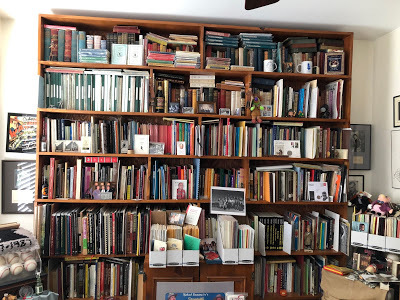
Well, most people who know me know I don’t write papers. That’s not to say I haven’t. I have actually done a number of them, just not for quite a while. I also was co-editor of our society’s newsletter for over 10 years and for several years wrote a monthly column on all things Sherlockian for “Plugs & Dottles”, the newsletter for The Hansoms of John Clayton. While I enjoyed both of those activities, writing is not my forte. I truly wish it were.
Any research I do is for my own information and enjoyment. I love to read such books as The London of Sherlock Holmes and In the Footsteps of Sherlock Holmes by Michael Harrison which delve into the Victorian world that Holmes was a part of. I also enjoy reading books and articles on Sherlockian media productions and the people involved in them. The latest issue of The Baker Street Journal had just such an article on H. A. Saintsbury by Paul Singleton which was excellent. I love anything about the history of the BSI and early Sherlockians. As a collector of early Sherlockian books it is always interesting to research the background of the books and their authors.
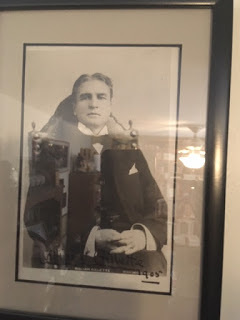
How did you become a Sherlockian actor autograph collector and what are some of your favorites?
I have two sons, one of whom is actually a Sherlockian, and when they were young I would take them to baseball card shows to pursue their hobby. These shows would usually bring in former players, including Hall of Famers, to sign autographs. After a while we started obtaining the autographs at these shows. I wasn’t that interested in the cards, although as a youngster I had been, but I enjoyed collecting signed baseballs and photographs, particularly of players from my youth. From there we began collecting autographs of various actors and actresses that we liked. It was a fairly short step to collecting Sherlockian autographs. Since I have always been interested in old films, classics and otherwise, I am naturally very interested in the various film presentations of Sherlock Holmes and the actors in them.
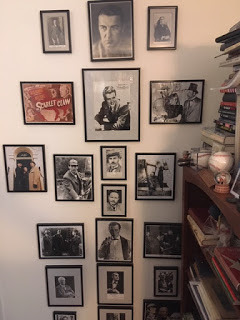
Most of us love buying books, but you can also be found at many conferences selling books at a dealer’s table. How has collecting and selling old books shaped your views on our hobby?
I didn’t start out to sell books. Early on a local BSI and collector was moving from a large house to an apartment and offered his collection for sale, wanting to keep it local if possible. It was a huge investment for me at the time but I took the plunge (never regretted). I had been collecting for a while so there were duplicates and, in order to help pay for the collection, I offered the duplicates for sale, sending out lists. Then a few years later, when I was preparing to get married, I sold off some of my collection the same way in order to clear some debts. Fortunately I have been able to reclaim almost all of what I sold. As with most collectors I would periodically upgrade the condition of a book or just buy something interesting if the price was right, even if I had a copy. Over time I had a supply of books to sell and the logical thing was to set up at the various conferences within driving distance, which I did.
I try to price my books fairly for other Sherlockians, although values are going up. While the selling helps me afford to attend these and other conferences (I am a retired civil servant), I often wish I were just there to enjoy the conference and mingle with the attendees and I do attend meetings and conferences without selling.
I am not sure that buying and selling has shaped my views on the hobby other than the observation that there are not as many collectors as there once was. Also, I find that many newer Sherlockians are unaware of many who went before them and the wonderful books that they provided to the hobby. While selling I try to educate as well.
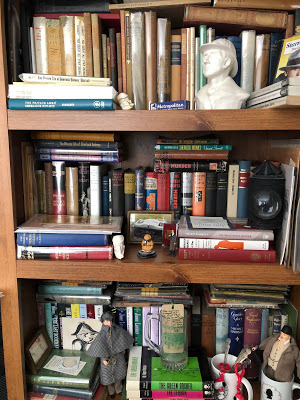
What book would you recommend to other Sherlockians?
I think a must for anyone, collector or not, is Klinger’s nine volume The Sherlock Holmes Reference Library if you can get it, otherwise his three volume set. Also, Sherlock Holmes for Dummies by Steve Doyle.
As for older books, I recommend Starrett’s The Private Life of Sherlock Holmes, which is available in inexpensive editions. I am very partial to A Sherlock Holmes Commentary by D. Martin Dakin. It has interesting commentary on each story plus a chronological table. I would recommend anything by Michael Harrison as well as Sherlock Holmes Detected by Ian McQueen and Seventeen Steps to 221b, a British anthology edited by James Edward Holroyd.
As you can see I am unable to recommend just one book.
Where do you see Sherlockiana in 5 to 10 years from now?
I think the future is very bright. Not so long ago many, including myself, were lamenting the lack of young people coming into the hobby. I am heartened by the many changes taking place which included more and very talented young people joining the ranks. Also, a large number of older Sherlockians are becoming welcoming to these new members and open to new ways of viewing Sherlockiana. I also believe that along with the accepting of new there is still a desire among most to keep many of the worthwhile traditions of the past.
 Joe told me I had to include a picture of Louie.
Joe told me I had to include a picture of Louie.Who am I to argue?



